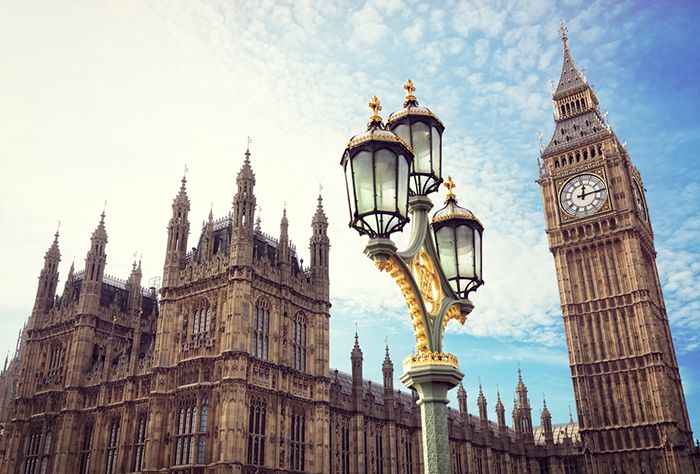
The government plans to convert “shops, takeaways and betting shops” in a bid to fulfil its manifesto commitment to build one million homes over the course of this Parliament.
Housing and levelling up secretary Michael Gove will set out measures to build homes in urban areas and unblock the planning system in the House of Commons later today.
He is set to announce:
- Launching a £24m Planning Skills Delivery Fund to clear backlogs and get the right skills in place
- Establishing a “super-squad” team of leading planners and other experts charged with working across the planning system to unblock major housing developments, backed by £13.5m in funding
- Founding an Office for Place – a new body to lead “a design revolution and ensure local people have a say in how housing is designed”
- Launching a consultation on local planning reform, “to make [the process] simpler, shorter and more visual, showing clearly what is planned in local areas so communities can engage”
Gove says one of the first tasks of its “super-squad” of planners will be to work on a new urban quarter in Cambridge which will create new homes, “supported by state-of-the-art facilities with cutting-edge laboratories and green spaces”.
A Cambridge Delivery Group, chaired by Peter Freeman and backed by £5m, will be established to begin to drive this project.
The housing secretary says: “Most people agree that we need to build more homes – the question is how we go about it.
“Rather than concreting over the countryside, we have set out a plan today to build the right homes in the right places where there is community support – and we’re putting the resources behind it to help make this vision a reality.”
Prime Minister Rishi Sunak adds that these reforms will add homes by “regenerating disused brownfield land, streamlining planning process and helping homeowners to renovate and extend their houses outwards and upwards”.
The plans also include looser restrictions on extending existing homes, converting lofts and renovating new buildings.
The plans to build one million new homes in a single Parliament were part of the Conservative Party’s 2019 manifesto. This Parliament will run to January 2025 at the latest, with experts saying the government will need to build around 330,000 homes to hit its target.
Labour shadow housing secretary Lisa Nandy says: “It takes some serious brass neck for the Tories to make yet more promises when the housing crisis has gone from bad to worse on their watch, and when housebuilding is on course to hit its lowest rate since the Second World War because Rishi Sunak rolled over to his own MPs.
“We don’t need more reviews, press releases or empty promises, we need bold action to get Britain building.”
Labour’s plans to boost housebuilding include proposals, announced in May, to relax planning restrictions on green belt land.
It also plans to reinstate a target to build 300,000 homes a year, which was scaled back from ‘mandatory’ to ‘advisory’ by the government last December under pressure from Conservative backbenchers.
Local Government Association chair Cllr Shaun Davies says: “There is no doubt that we need more homes as well as to reinvigorate our high streets and town centres.
“However, premises such as offices, barns, and shops are not always suitable for housing.”
The association has a six-point plan to boost housebuilding, which includes setting up a new national council housebuilding delivery taskforce and allowing councils to keep all of their receipts from Right to Buy sales.
However, Persimmon chief executive Dean Finch says: “Persimmon welcomes the proposals announced today to deliver much-needed reform of the planning system with the aim of accelerating the development of new homes.”
But Quilter Cheviot property research analyst Oli Creasey labels the move as “a damp squib”.
Creasey says: “The issue with the longstanding target to build 300,000 homes a year is that it is too blunt – in theory, it’s relatively straightforward to build thousands of homes on an out-of-the-way brownfield site – far more difficult is developing the surrounding infrastructure [schools, jobs, shops, etc] that make people want to live there.
“However, urban construction isn’t easy either. Easing planning restrictions will help, but the land is more expensive, building costs are higher, and rezoning former retail sites as residential developments could tip the balance of homes vs amenities in the other direction.
He adds: “Part of current planning constraints does come from so-called “NIMBYism”, but it also reflects the desire of local councils to not hollow out their town centres with new apartments.
“Furthermore, planning departments are generally underfunded and struggling to work through existing backlogs. Michael Gove’s plan includes funds and personnel to tackle this backlog, but the size, at £24m, is somewhat underwhelming.”
Goodlord director of insurance Oli Sherlock adds: “If we want to ease the pressure on the rental sector, we desperately need more homes to be built.
“However, we need targets and pledges to translate into bricks and mortar. We’ve neglected our housing market for far too long — now is the time for pragmatic action, not more talk.”



